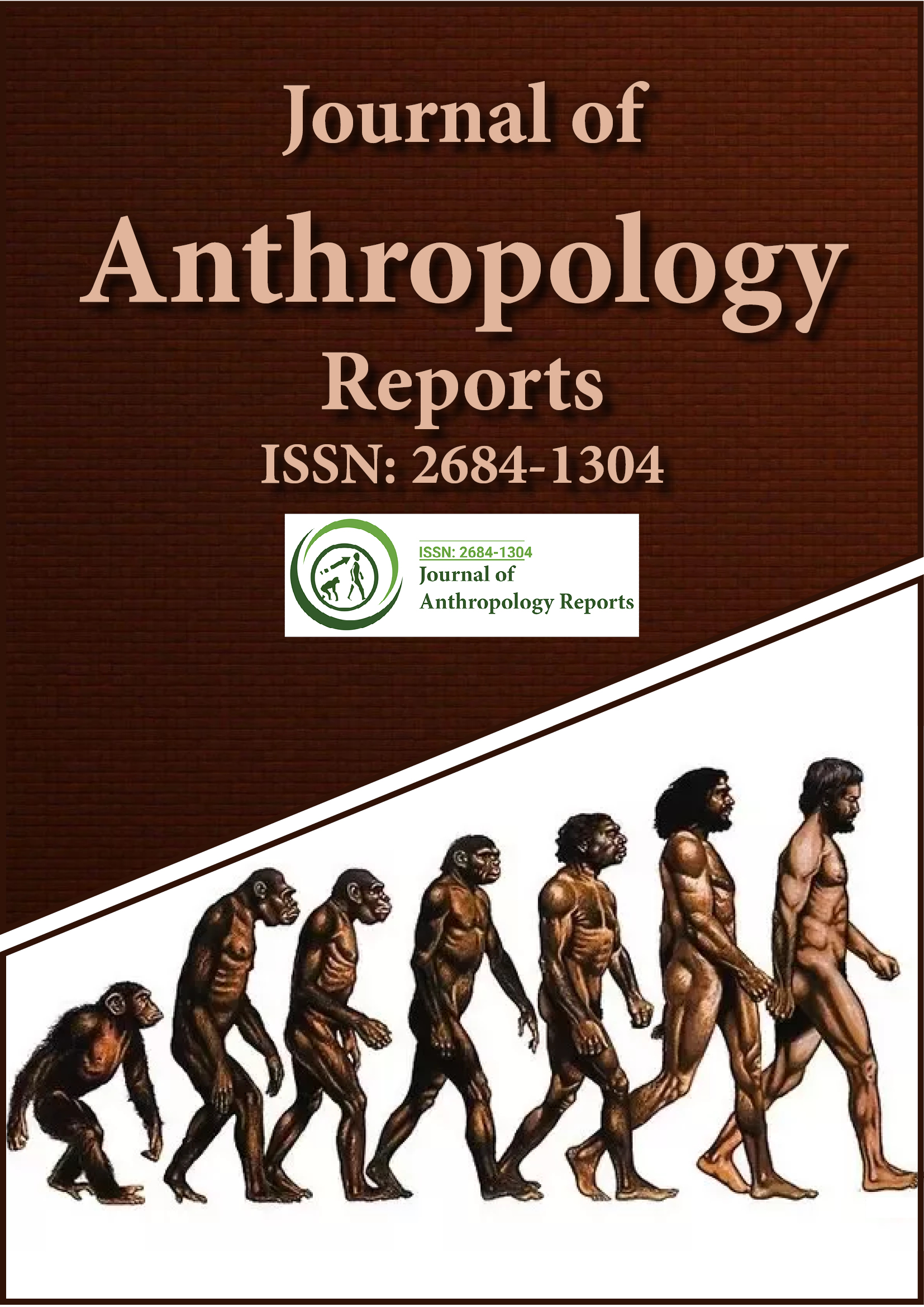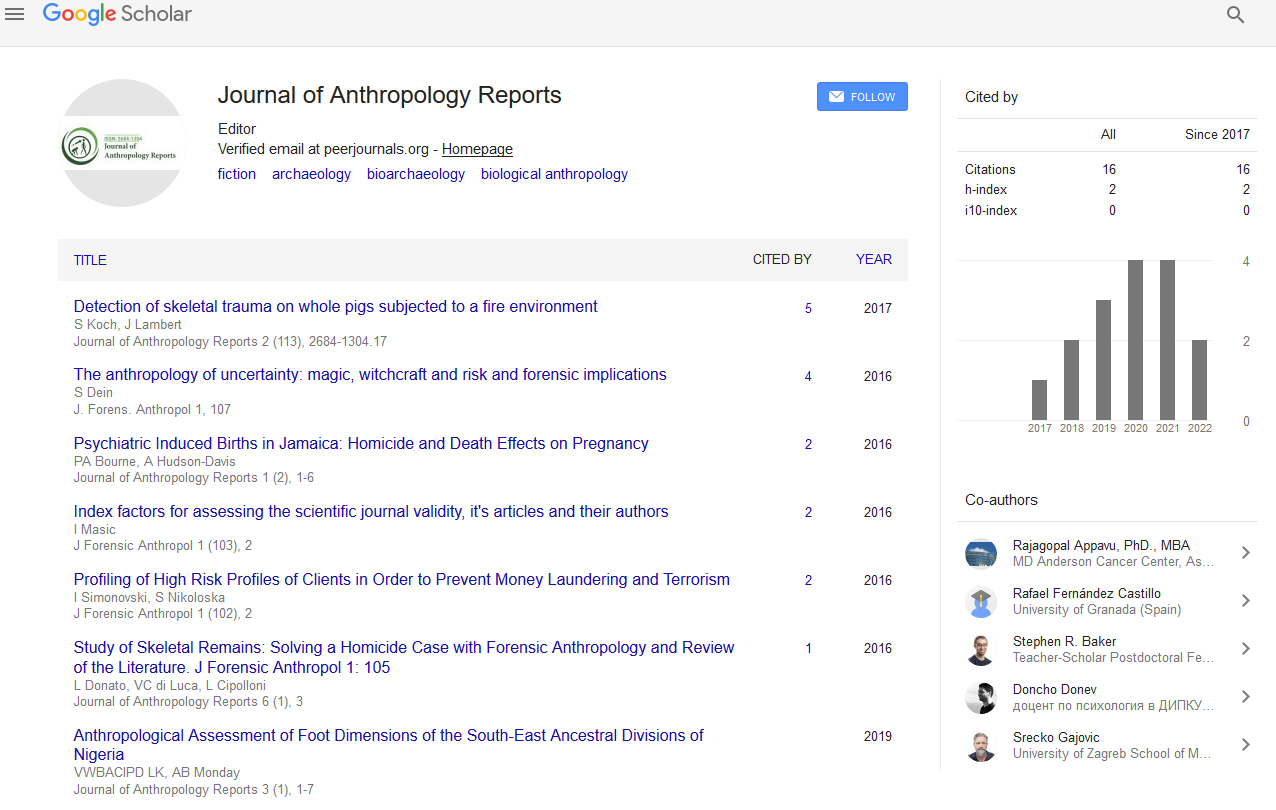Indexed In
- RefSeek
- Hamdard University
- EBSCO A-Z
Useful Links
Share This Page
Journal Flyer

Open Access Journals
- Agri and Aquaculture
- Biochemistry
- Bioinformatics & Systems Biology
- Business & Management
- Chemistry
- Clinical Sciences
- Engineering
- Food & Nutrition
- General Science
- Genetics & Molecular Biology
- Immunology & Microbiology
- Medical Sciences
- Neuroscience & Psychology
- Nursing & Health Care
- Pharmaceutical Sciences
Commentary - (2024) Volume 7, Issue 4
Advancements in DNA Analysis: Revolutionizing Forensic Anthropology and Solving Cold Cases
Daniel Hunter*Received: 29-Nov-2024, Manuscript No. JFA-24-28386; Editor assigned: 02-Dec-2024, Pre QC No. JFA-24-28386 (PQ); Reviewed: 16-Dec-2024, QC No. JFA-24-28386; Revised: 23-Dec-2024, Manuscript No. JFA-24-28386 (R); Published: 30-Dec-2024, DOI: 10.35248/2684-1304.24.7.210
Description
Forensic anthropology, the application of anthropological methods and techniques to solve legal cases, plays an important role in identifying human remains, especially in cases where traditional identification methods like dental records or fingerprints are not available. As technological advancements continue to reshape various fields, forensic anthropology has benefited significantly from the development of new identification techniques, which offer more precise, efficient and ethical ways to resolve old and complex cases. These advancements not only assist in solving long-unsolved cases but also provide a more holistic understanding of human remains, contributing to both scientific progress and justice.
The importance of new identification techniques becomes particularly evident in older forensic cases, where the initial investigation may have been limited by the available technology or the lack of sufficient evidence. For example, many cases of unidentified remains may have been closed without resolution due to insufficient physical evidence or the deterioration of bodies over time. In such instances, modern tools like DNA analysis, 3D imaging and isotopic analysis can be pivotal in providing essential insights that were previously unattainable. These technologies can breathe new life into cold cases, offering the possibility of identification and even insight into the circumstances surrounding an individual’s death.
One of the most significant advancements in forensic anthropology has been the improvement of DNA analysis techniques. DNA profiling, which was once limited by the quality and quantity of DNA samples available, has seen tremendous progress. Today, even degraded or fragmented DNA can be extracted and analyzed with far greater precision than ever before. This is especially important in older cases where the remains may be severely compromised by environmental factors such as exposure to the elements or prolonged burial. DNA can provide a definitive link to a person’s identity, allowing forensic anthropologists to compare genetic profiles with databases of known individuals or potential relatives. In cases where traditional identification methods fail, DNA has become an invaluable tool in confirming the identity of the deceased, even after many years.
Moreover, DNA analysis has also allowed forensic anthropologists to explore deeper aspects of an individual’s life. For instance, through mitochondrial DNA or Y-chromosome analysis, researchers can trace maternal and paternal lineages, providing valuable clues to an individual’s familial background. In cases of historical importance, such as the identification of mass graves or individuals lost in conflicts, this kind of genetic information can contribute to a broader historical understanding and provide families with long-awaited closure.
Another important development in forensic anthropology is the use of 3D imaging and facial reconstruction techniques. Advances in Computer-assisted Tomography (CT) scans, Magnetic Resonance Imaging (MRI) and photogrammetry now allow for the creation of detailed 3D models of skeletal remains, which can then be used for facial reconstructions. This technique is invaluable when facial features or other distinguishing characteristics are not immediately apparent in skeletal remains. By reconstructing a person’s face based on skeletal structure, anthropologists can generate an image that may bear a closer resemblance to the individual while helping investigators and the public identify the deceased. Additionally, 3D imaging has made it possible to examine bones in detail, allowing for better assessments of trauma or disease that may have occurred during the individual’s life or at the time of death. In cases that may be decades or even centuries old, this technology provides a powerful tool for revisiting the investigation with a new lens.
In conclusion, the importance of new identification techniques in forensic anthropology cannot be overstated. As technologies continue to advance, forensic anthropologists are now better equipped than ever to solve cases that were previously deemed unsolvable. DNA analysis, 3D imaging and isotopic analysis have opened up new possibilities for identifying individuals and understanding their lives and deaths, especially in long-unsolved cases. However, with these advancements comes the responsibility to handle such information ethically and with respect. As forensic anthropology evolves, the integration of these new techniques will continue to play a significant role in delivering justice, closure and understanding to the world of forensic science.
Citation: Hunter D (2024). Advancements in DNA Analysis: Revolutionizing Forensic Anthropology and Solving Cold Cases. J Anthropology Rep. 7:210.
Copyright: © 2024 Hunter D. This is an open-access article distributed under the terms of the Creative Commons Attribution License, which permits unrestricted use, distribution, and reproduction in any medium, provided the original author and source are credited.

